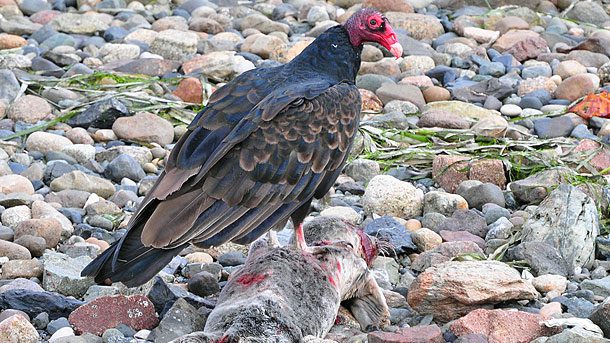Do vultures find dead animals by smell or by tracking predators or scavengers on the ground?


Researchers proved fairly long ago that Turkey Vultures can smell. In 1938, the Union Oil Company discovered that by injecting a strong-smelling organic chemical called mercaptan into gas lines, they could readily find leaks by monitoring vulture activity above the pipelines. Some mercaptans smell like rotting cabbage or eggs. They and related chemicals are released as carcasses decompose. To us, mercaptans smell horrible, but for vultures they are associated with fine dining.
In a 1986 study in Panama, Turkey Vultures found 71 of 74 chicken carcasses within three days. There was no time difference between finding concealed and unconcealed carcasses, and the only carcasses the vultures seemingly had trouble finding were the freshest ones. Even though the older carcasses emitted a stronger odor, the vultures showed a definite preference for eating fresher carcasses.
Greater and Lesser Yellow-headed Vultures of Central and South America, which are closely related to Turkey Vultures, seem to have comparable reliance on their sense of smell for finding food, and King Vultures may also use smell to find food. These species must all be able to find carrion in forests where the canopy visually obscures dead animals. Unlike these species, Black Vultures, which find their food primarily in open country, depend far more on vision and are believed to have a relatively poor sense of smell. Of course, one strategy that all vultures use to locate food is to watch for other circling vultures to drop down suddenly; in that sense, even Turkey Vultures find much of their food visually.


All About Birds is a free resource
Available for everyone,
funded by donors like you


